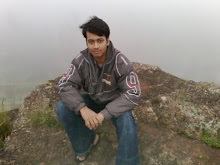
Shivneri Fort is a historic military fortification located near Junnar. It is the birthplace of Shivaji Maharj.
Shahaji Raje, Shivaji Maharaj's father, was a general in the army of the Adil Shah, Sultan of Bijapur. He was concerned for the safety of his wife Rani Jijabai during her pregnancy as there was constant warfare going on. He therefore moved his family to Shivneri fort. Shivneri is a highly defensible location, with steep rocks on four sides and a strongly-built citadel.
Shivaji Maharaj was born at the fort on 19 February 1630, and spent his childhood there.he got his name SHIVBA here. Inside the fort is a small temple dedicated to the goddess Shivai Devi, after whom Shivaji was named.
There are statues of Rani Jijabai and young Maharaj Shivaji. At the centre of the fort is a water pond which is called 'Badami Talav'. To the South of 'Badami Talav' are the statues Jijabai and a young Shivaji. In the fort there are two water springs, namely Ganga-Jamumna, which have water throughout the whole year. Two kilometers away from this fort there are the Lenyadri caves which is one of Ashtavinayaka temple in Maharastra.
Detail Background:
This fort has lot to tell. Shivneri, a birth place of Chhatrapati Shivaji (1627), is located at a distance of around 3 km from Junnar (125 km from Pune). Shahaji, father of Shivaji kept his wife Jijabai in this fort during her pregnancy, as the fort was unique and difficult to reach. It is easier to reach the fort by the normal road than to climb from the hills. One has to get through 7 doors before reaching the actual fort. This fort is a very big structure with a very good height. The old and beautiful 'Devi Shivai' temple is on the way. Shivaji was taken from the name of this goddess. Shivaji spent his childhood on this fort. He acquired all the skills and training on this fort which he used while establishing Swaraj. He learnt the early lessons of Swaraj on this fort.
The wide base of the fort is towards the south and the narrow point is towards the north. The ascending path to the fort is defended by seven gates, the fifth one being armoured with anti-elephant spikes. The fort has several rock-hew cisterns and ponds, of which two large ones are known as Ganga and Jumuna. Today, there are only a few structures remaining in the fort. At one end there is a ruined stable and at the other end a mosque of the Mughal period. The house where shivaji was born (in February, 1630 AD) has been recently restored and a temple with statues of Shivaji and Jijabai called Shivakunja, has also been built. Sir Richard Temple in his book Shivaji and the Rise Marathas wrote about Shivaneri: You will see what a rugged precipitous place this is and what a fitting spot it was for a hero to be born in!
Junnar means "Jirna Nagar", one of the oldest cities of ancient India. The Shaka dynasty ruled here. Gautamiputra Satkarni, who was a Satvaahan king, defeated the Shakas to establish his rule. The era of Satvaahan is the most glorious one, as many artistic works were carried out during their rule. Junnar became their capital city. This was the golden era of our culture. Here more than 100 caves were carved out in the mountains surrounding Junnar. The mountain on which fortification was constructed, is well protected by steep scarps, and is the most suitable for constructing caves. Here 64 caves were carved, and eight inscriptions are found here. After the Satavahanas, the Shivneri for was occupied by the Shilaharas, the Yadavas, the Bahamanis and the Mughals. In 1599 AD the hill fort was granted to Shivaji's grandfather, Maloji Bhosale and passed down to Shahaji. Though Shivaji was born here, he had to surrender the fort to the Mughals and could not take it back in his lifetime.
Shivaji Maharaj left this fort in 1632 and it went into the hands of Mughals in 1637. In 1650 the local fishermen refuted against them. The folks lost to the rulers and were assassinated cruelly on the fort. In 1678 the Marathas raided Junnar, but attempt to capture Shivneri was futile. Shahu Maharaj brought the fort under his control forty years later. Later it was under the control of Peshwas.
The Shivneri cluster forts, comprising Harishchandragad, Junnar, Jivadhan, etc. was very important strategically, because it controlled the ancient Nane Ghat Pass.
